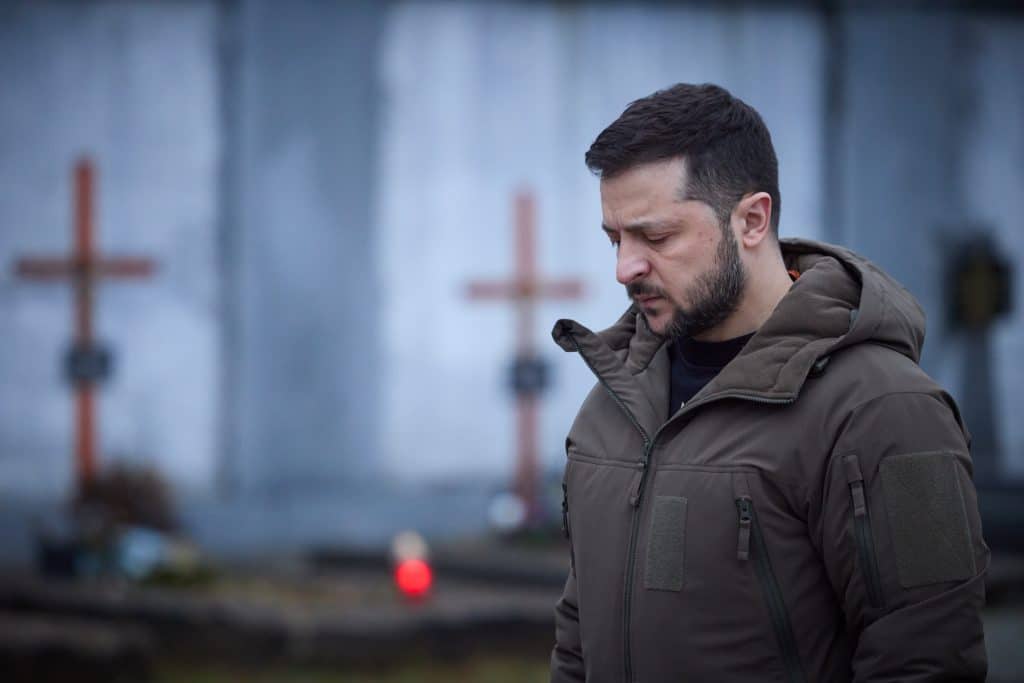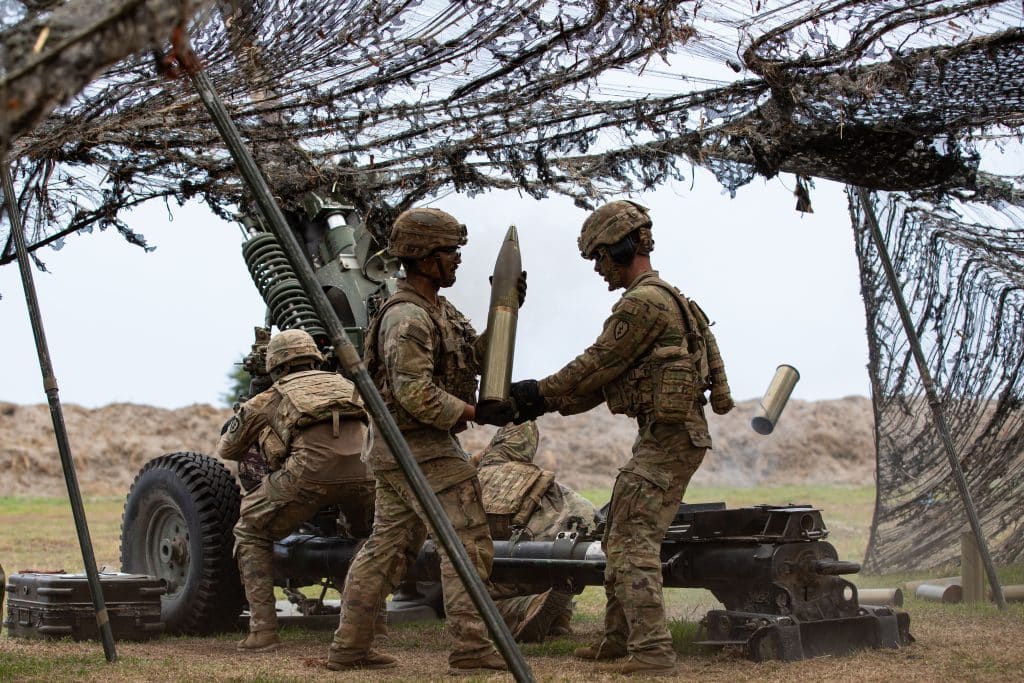by MSG Daniel L. Dodds, US Army
In early 2022, people worldwide watched as Russia began its preparation for what became an invasion of its neighboring country Ukraine. After months of preparation along the Russia-Ukraine border on the east, a 40-mile convoy staged in the northern part of Russia’s territory, and the movement of Russian forces to Belarus, the invasion took place on 24 February 2022 (Sciutto, 2022). Since these attacks, both sides have been conducting operations in Eastern Europe, known as Irregular Warfare (IW). According to the Joint Chiefs of Staff (JCS) (n.d.), “IW is a struggle among state or non-state actors to influence populations and affect legitimacy” (p. 3). Additionally, IW includes political struggles for legitimacy by using proxies and covert or clandestine operations to influence an adversary or enemy through non-military warfare (JCS, n.d.).
Unlike the War in Vietnam, which required significant people in the country to achieve the desired end state through attrition warfare, IW enables mission accomplishment with limited personnel while avoiding escalation “to direct armed conflict” (JCS, n.d., p. 3). Furthermore, IW achieves its goals from a myriad of resources, including terrorist cells, cyberspace technologies, and information warfare on populations around the globe (JCS, n.d.). Recognizing the threats both sides pose, the use of non-military IW capabilities has defined the current conflict. This paper aims to analyze the implementation of the performance triad, mission command principles of disciplined initiative, risk acceptance, and the leadership attributes of presence during Ukraine’s conflict with Russia.

Ukraine’s President honors the memory of fallen Ukrainian soldiers on January 11, 2023 in a ceremony that took place on the Mars field of Lychakiv cemetery. Source.
Performance Triad
The Army’s Performance Triad framework focuses on the holistic health and fitness program’s three critical components of sleep, activity, and nutrition (Department of the Army [DA], 2015). The three components of sleep, activity, and nutrition help sustain the force’s overall physical and mental health during extended military operations like IW. Having adequate sleep, healthy eating habits, and regular physical activity reduces fatigue and injury risks while improving brain health and functioning (DA, 2020). Therefore, using the Army Performance Triad activities of sleep, activity, and nutrition improves performance during deployment operations, including IW situations.
Leaders throughout the Ukrainian army must use the components of the performance triad during military operations. In the case of the current conflict, Ukrainian Soldiers have had to endure long hours of combat and poor living conditions in aggressive environments (Sciutto, 2022). An example of using the components of the performance triad during these operations is when leaders ensure their soldiers have adequate rest, maintain a healthy diet, and engage in daily physical activity despite being in a challenging environment. When applied correctly, Ukrainian soldiers enhance their ability to conduct the mission effectively, leading to combat success. Additionally, leaders can incorporate work-rest cycles while planning offensive operations, include sleep windows before extended convoy operations, and ensure their soldiers receive nutritious meals when working in austere environments. If Ukraine’s military leaders apply the performance triad components to their operations, they can align their forces correctly to achieve mission success and improve the principles of mission command.
Mission Command Principles
According to Army Doctrine Publication 5-0, Mission Command is the Army’s approach to commanding and controlling forces through decentralized decision-making by empowering subordinates (DA, 2019a). Since commanders cannot oversee all actions within their command, they rely on subordinate leaders to use the principles of mission command to execute orders in a decentralized manner. In this regard, leaders empower subordinates through “centralization of command, distributed control, and decentralization of execution” so that essential decisions happen quickly without going through bureaucratic systems, which waste valuable time (Mulgund, 2021, para. 1). At the forefront of this concept, commanders grant their subordinates freedom to act without orders towards the desired end state or objective. For mission command to be effective, leaders must trust their subordinates, while subordinates must prove competence to their leaders. Inherently, for mission command to succeed, subordinate leaders must use disciplined initiative when making decisions without orders.

Disciplined Initiative
According to Army Doctrine Publication 6-0, disciplined initiative is the ability of subordinates to operate within the commander’s intent to achieve the desired end state (DA, 2019b). In doing so, subordinates follow orders until circumstances change, requiring them to make decisions and act on experience while working to achieve the desired results. When leaders and followers use disciplined initiative, they seize opportunities by acting to improve a situation without seeking additional guidance or direction. Equally, commanders rely on their troops to perform under their intentions rather than merely following a failed strategy. When subordinates at various echelons exercise disciplined initiative, friendly forces seize the initiative and gain a tactical advantage over their adversaries (DA, 2019b).
During Russia’s current invasion of Ukraine, there are several instances where Ukraine’s military showed disciplined initiative. For example, recognizing the shortfalls in Ukraine’s ability to detect Russian mortar positions, Ukrainian forces began using commercially purchased drones to conduct reconnaissance and surveillance (Altman, 2023). According to Altman (2023), adding these drones to support Ukraine’s defense enabled their forces to find Russian mortar positions, return fire at the point of origin, and eliminate the threats posed by Russian forces. While disciplined initiative is necessary for successful IW operations, accepting and managing risks is also crucial for subordinates when making decisions using the principles of mission command.
Risk Acceptance
Army Doctrine Publication 6-0 states that risk is the vulnerability of a valuable individual or object to threat, harm, or loss (DA, 2019b). Leaders at all levels evaluate risk to mitigate them where possible and decide what level of risk is acceptable. In this context, leaders use two criteria to accept risk: “risk to the force and risk to the mission against the perceived benefit” (DA, 2019b, p. 25). Risk acceptance identifies potential hazards during military operations and determines which ones are acceptable and which to avoid. In either case, risk acceptance weighs the benefits of the course of action against the associated risks through mission planning and preparation. Risk acceptance is often necessary during military operations, like IW, as inherent risks are involved in any mission.
Several examples of risk acceptance from Ukraine’s forces in the ongoing Russia-Ukraine conflict exist. Over the last year, Ukrainian Soldiers have faced significant risks from Russian-backed separatist and para-military forces (Aggarwal, 2022). However, Ukrainian leaders have recognized the importance of taking calculated risks to defend their country from Russian forces. For example, Ukrainian Soldiers have conducted complex, counter-insurgency-style operations to retake territory previously occupied by separatists (Aggarwal, 2022). By taking these risks, Ukrainian military leaders have achieved vital strategic objectives and gained momentum while confronting Russian forces. Leadership presence is essential in influencing risk acceptance during IW activities as it provides Soldiers with guidance, support, and motivation to make decisions while staying focused on the mission objectives.

Leadership Presence
Army Doctrine Publication 6-22 states that presence “represents who leaders are and what they stand for” (DA, 2019c, p. 51). Army leaders must be present to be effective. Presence includes the ability for leaders to listen and understand Soldier’s needs and provide clear and concise direction to assist them. Furthermore, the attribute of presence articulates the essential requirement for what a leader should be and how they expect others to be, especially during complex or unpredictable situations. During IW, Soldiers may face unexpected challenges that require strong leadership to stay focused and motivated to succeed.
During the Russia-Ukraine conflict, Ukraine’s military and civilian leaders continually show a strong presence by remaining composed and focused amid chaos. For example, Ukraine’s President Volodymyr Zelenskyy regularly visits frontline troops in the eastern region of Ukraine’s territory, where intense fighting has occurred between Russian and Ukrainian forces (Ritter, 2023). During the visits, President Zelenskyy meets with the troops defending Ukraine’s sovereignty, awards them for their service, and shakes their hands, proving his commitment to their mission and inspiring confidence in their abilities (The Kyiv Independent News Desk, 2023). Through presence, Ukraine’s leaders have been able to successfully navigate the complex nature of war while inspiring their troops to defend their country from Russian aggression.
Conclusion
The Army’s Performance Triad focuses on three key elements—sleep, activity, and nutrition—which help Soldiers keep elevated levels of physical and mental readiness despite the challenging environment. Mission command allows commanders to delegate authority to subordinates, which encompasses decentralized execution within the constraints of the commander’s intent. Disciplined initiative encourages subordinates to take action without orders to gain an advantage over adversaries. Risk acceptance is the process of identifying what is acceptable during the accomplishment of missions. Presence is what leaders stand for and what they expect from their followers. When leaders incorporate the Army Performance Triad, mission command principles of disciplined initiative, risk acceptance, and leadership attributes of presence, they increase the unit’s opportunities for success during IW operations.

References
Aggarwal, M. (2022, October 2). Ukraine retakes a key city Putin claimed to have annexed: Here’s why it matters. NBC News. https://www.nbcnews.com/news/world/ukraine-retakes-lyman-russia-retreat-putin-annexation-rcna50357
Altman, H. (2023, March 21). Ukrainian drone pilot’s frontline account of fighting via eyes in the sky. The Warzone. https://www.thedrive.com/the-war-zone/ukrainian-drone-pilots-frontline-account-of-fighting-via-eyes-in-the-sky
Department of the Army. (2015). The performance triad guide: Sleep, activity, and nutrition. https://p3.amedd.army.mil/downloads
Department of the Army. (2019a). The operations process (ADP 5-0). https://armypubs.army.mil/ProductMaps/PubForm/Details.aspx?PUB_ID=1007409
Department of the Army. (2019b). Mission command: Command and control of Army forces (ADP 6-0). https://armypubs.army.mil/ProductMaps/PubForm/Details.aspx?PUB_ID=1007502
Department of the Army. (2019c). Army leadership and the profession (ADP 6-22). https://armypubs.army.mil/ProductMaps/PubForm/Details.aspx?PUB_ID=1007609
Department of the Army. (2020). Holistic health and fitness (FM 7-22). https://armypubs.army.mil/ProductMaps/PubForm/Details.aspx?PUB_ID=1020968
Joint Chiefs of Staff. (n.d.) Joint warfighting (JP 1Vol 1). https://jdeis.js.mil/jdeis/new_pubs/jp1_vol1.pdf
Mulgund, S. (2021). Evolving the command and Control of airpower. Wild Blue Yonder. https://www.airuniversity.af.edu/Wild-Blue-Yonder/Article-Display/Article/2575321/evolving-the-command-and-control-of-airpower/
Ritter, K. (2023, March 23). Zelenskyy visits the front line as Ukraine gears up for a counteroffensive. PBS News Hour. https://www.pbs.org/newshour/world/zelenskyy-visits-front-line-as-ukraine-gears-up-for-counteroffensive
Sciutto, J. [CNN]. (2022, February 28). New satellite images show a 40-mile-long Russian military convoy [Video]. Retrieved May 1, 2023, from https://www.youtube.com/watch?v=8D8lqYLUN8Y
The Kyiv Independent News Desk. (2023, March 22). Zelensky visits soldiers on the front line in Donetsk Oblast. The Kyiv Independent. https://kyivindependent.com/zelensky-visits-soldiers-on-frontline-in-donetsk-oblast/
_______________________
Master Sergeant Daniel L. Dodds is a Military Police Senior Noncommissioned Officer. He has served in every leadership position, from Patrolman to Antiterrorism/ Force Protection Supervisor. He is currently attending the Sergeants Major Course (Resident) Class 73 at the US Army Noncommissioned Officer Leadership Center of Excellence. His civilian education includes an Associate Degree from Excelsior University, and he is pursuing his Bachelor of Arts in Leadership and Workforce Development from the Army Command and General Staff College (CGSC).
As the Voice of the Veteran Community, The Havok Journal seeks to publish a variety of perspectives on a number of sensitive subjects. Unless specifically noted otherwise, nothing we publish is an official point of view of The Havok Journal or any part of the U.S. government.
Buy Me A Coffee
The Havok Journal seeks to serve as a voice of the Veteran and First Responder communities through a focus on current affairs and articles of interest to the public in general, and the veteran community in particular. We strive to offer timely, current, and informative content, with the occasional piece focused on entertainment. We are continually expanding and striving to improve the readers’ experience.
© 2024 The Havok Journal
The Havok Journal welcomes re-posting of our original content as long as it is done in compliance with our Terms of Use.



